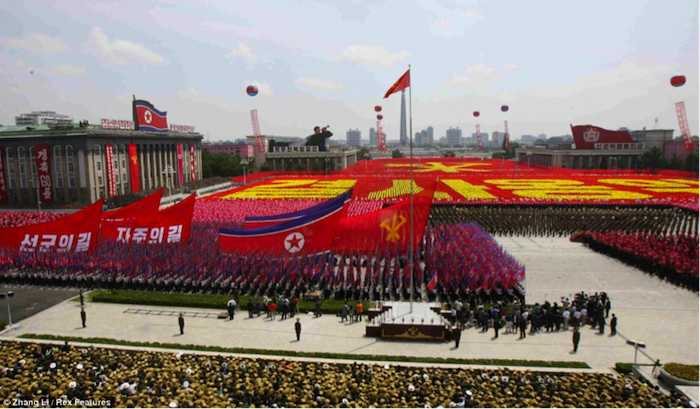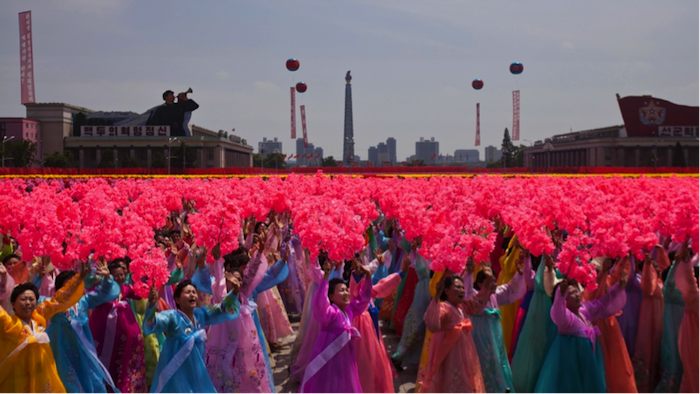Hito Steyerl | Politics of Post-Representation
Keywords: advertisement, aesthetics, affective labor, algorithm, althusser, Art, art practice, art space, artselfie, attention economy, bot armies, bots, bourdieu, capital, capitalism, captcha, Culture, exploitation, facebook, game of thrones, gay porn stars, heartbleed, hezbollah, Hito Steyerl, identification, ideology, images, instagram, internship, interpellation, is the museum a factory?, Jacques Ranciere, labor, mediation, megan fox, Museum, neoliberalism, normcore, north korea, plutotechnocracy, Politics, post-representation, representation, representational, robbie williams, smart phones, social media, soviet union, spam, spam of the earth, stalin, Technology, Turkey, twitter, unpaid, visual culture
Facebook militias, Twitter bots, and digital mercenaries — Hito Steyerl reveals our digital citizenry.
From the militarization of social media to the corporatization of the art world, Hito Steyerl’s writings represent some of the most influential bodies of work in contemporary cultural criticism today. As a documentary filmmaker, she has created multiple works addressing the widespread proliferation of images in contemporary media, deepening her engagement with the technological conditions of globalization. Steyerl’s work has been exhibited in numerous solo and group exhibitions including documenta 12, Taipei Biennial 2010, and 7th Shanghai Biennial. She currently teaches New Media Art at Berlin University of the Arts.
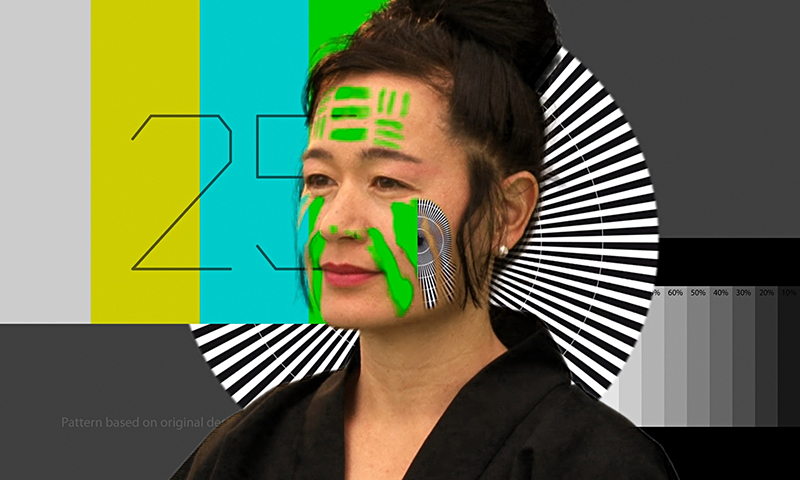
Hito Steyerl, How Not To Be Seen: A Fucking Didactic Educational .MOV File (2013)
Marvin Jordan I’d like to open our dialogue by acknowledging the central theme for which your work is well known — broadly speaking, the socio-technological conditions of visual culture — and move toward specific concepts that underlie your research (representation, identification, the relationship between art and capital, etc). In your essay titled “Is a Museum a Factory?” you describe a kind of ‘political economy’ of seeing that is structured in contemporary art spaces, and you emphasize that a social imbalance — an exploitation of affective labor — takes place between the projection of cinematic art and its audience. This analysis leads you to coin the term “post-representational” in service of experimenting with new modes of politics and aesthetics. What are the shortcomings of thinking in “representational” terms today, and what can we hope to gain from transitioning to a “post-representational” paradigm of art practices, if we haven’t arrived there already?
Hito Steyerl Let me give you one example. A while ago I met an extremely interesting developer in Holland. He was working on smart phone camera technology. A representational mode of thinking photography is: there is something out there and it will be represented by means of optical technology ideally via indexical link. But the technology for the phone camera is quite different. As the lenses are tiny and basically crap, about half of the data captured by the sensor are noise. The trick is to create the algorithm to clean the picture from the noise, or rather to define the picture from within noise. But how does the camera know this? Very simple. It scans all other pictures stored on the phone or on your social media networks and sifts through your contacts. It looks through the pictures you already made, or those that are networked to you and tries to match faces and shapes. In short: it creates the picture based on earlier pictures, on your/its memory. It does not only know what you saw but also what you might like to see based on your previous choices. In other words, it speculates on your preferences and offers an interpretation of data based on affinities to other data. The link to the thing in front of the lens is still there, but there are also links to past pictures that help create the picture. You don’t really photograph the present, as the past is woven into it.
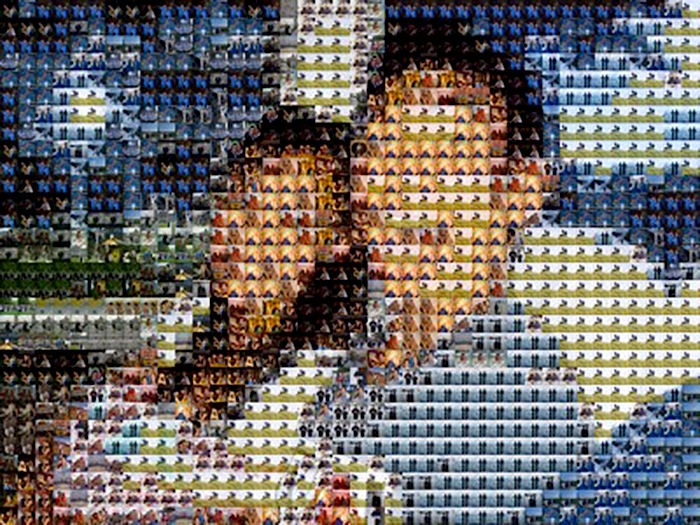
The result might be a picture that never existed in reality, but that the phone thinks you might like to see. It is a bet, a gamble, some combination between repeating those things you have already seen and coming up with new versions of these, a mixture of conservatism and fabulation. The paradigm of representation stands to the present condition as traditional lens-based photography does to an algorithmic, networked photography that works with probabilities and bets on inertia. Consequently, it makes seeing unforeseen things more difficult. The noise will increase and random interpretation too. We might think that the phone sees what we want, but actually we will see what the phone thinks it knows about us. A complicated relationship — like a very neurotic marriage. I haven’t even mentioned external interference into what your phone is recording. All sorts of applications are able to remotely shut your camera on or off: companies, governments, the military. It could be disabled for whole regions. One could, for example, disable recording functions close to military installations, or conversely, live broadcast whatever you are up to. Similarly, the phone might be programmed to auto-pixellate secret or sexual content. It might be fitted with a so-called dick algorithm to screen out NSFW content or auto-modify pubic hair, stretch or omit bodies, exchange or collage context or insert AR advertisement and pop up windows or live feeds. Now lets apply this shift to the question of representative politics or democracy. The representational paradigm assumes that you vote for someone who will represent you. Thus the interests of the population will be proportionally represented. But current democracies work rather like smartphone photography by algorithmically clearing the noise and boosting some data over other. It is a system in which the unforeseen has a hard time happening because it is not yet in the database. It is about what to define as noise — something Jacques Ranciere has defined as the crucial act in separating political subjects from domestic slaves, women and workers. Now this act is hardwired into technology, but instead of the traditional division of people and rabble, the results are post-representative militias, brands, customer loyalty schemes, open source insurgents and tumblrs.
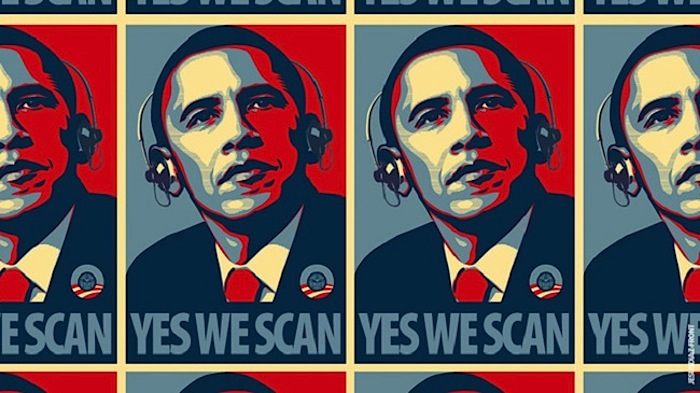
Additionally, Ranciere’s democratic solution: there is no noise, it is all speech. Everyone has to be seen and heard, and has to be realized online as some sort of meta noise in which everyone is monologuing incessantly, and no one is listening. Aesthetically, one might describe this condition as opacity in broad daylight: you could see anything, but what exactly and why is quite unclear. There are a lot of brightly lit glossy surfaces, yet they don’t reveal anything but themselves as surface. Whatever there is — it’s all there to see but in the form of an incomprehensible, Kafkaesque glossiness, written in extraterrestrial code, perhaps subject to secret legislation. It certainly expresses something: a format, a protocol or executive order, but effectively obfuscates its meaning. This is a far cry from a situation in which something—an image, a person, a notion — stood in for another and presumably acted in its interest. Today it stands in, but its relation to whatever it stands in for is cryptic, shiny, unstable; the link flickers on and off. Art could relish in this shiny instability — it does already. It could also be less baffled and mesmerised and see it as what the gloss mostly is about – the not-so-discreet consumer friendly veneer of new and old oligarchies, and plutotechnocracies.
MJ In your insightful essay, “The Spam of the Earth: Withdrawal from Representation”, you extend your critique of representation by focusing on an irreducible excess at the core of image spam, a residue of unattainability, or the “dark matter” of which it’s composed. It seems as though an unintelligible horizon circumscribes image spam by image spam itself, a force of un-identifiability, which you detect by saying that it is “an accurate portrayal of what humanity is actually not… a negative image.” Do you think this vacuous core of image spam — a distinctly negative property — serves as an adequate ground for a general theory of representation today? How do you see today’s visual culture affecting people’s behavior toward identification with images?

HS Think of Twitter bots for example. Bots are entities supposed to be mistaken for humans on social media web sites. But they have become formidable political armies too — in brilliant examples of how representative politics have mutated nowadays. Bot armies distort discussion on twitter hashtags by spamming them with advertisement, tourist pictures or whatever. Bot armies have been active in Mexico, Syria, Russia and Turkey, where most political parties, above all the ruling AKP are said to control 18,000 fake twitter accounts using photos of Robbie Williams, Megan Fox and gay porn stars. A recent article revealed that, “in order to appear authentic, the accounts don’t just tweet out AKP hashtags; they also quote philosophers such as Thomas Hobbes and movies like PS: I Love You.” It is ever more difficult to identify bots – partly because humans are being paid to enter CAPTCHAs on their behalf (1,000 CAPTCHAs equals 50 USD cents). So what is a bot army? And how and whom does it represent if anyone? Who is an AKP bot that wears the face of a gay porn star and quotes Hobbes’ Leviathan — extolling the need of transforming the rule of militias into statehood in order to escape the war of everyone against everyone else? Bot armies are a contemporary vox pop, the voice of the people, the voice of what the people are today. It can be a Facebook militia, your low cost personalized mob, your digital mercenaries. Imagine your photo is being used for one of these bots. It is the moment when your picture becomes quite autonomous, active, even militant. Bot armies are celebrity militias, wildly jump cutting between glamour, sectarianism, porn, corruption and Post-Baath Party ideology. Think of the meaning of the word “affirmative action” after twitter bots and like farms! What does it represent?
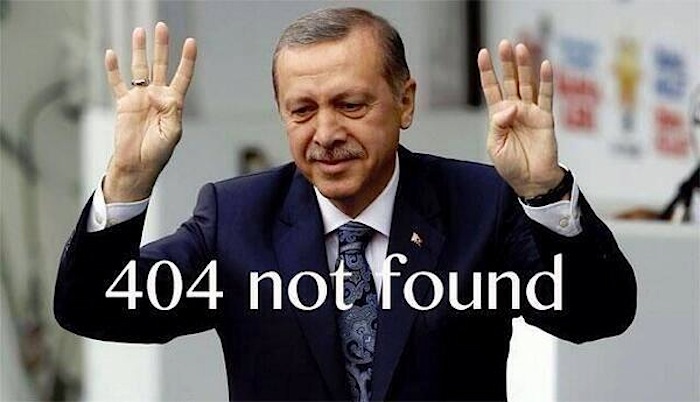
MJ You have provided a compelling account of the depersonalization of the status of the image: a new process of de-identification that favors materialist participation in the circulation of images today. Within the contemporary technological landscape, you write that “if identification is to go anywhere, it has to be with this material aspect of the image, with the image as thing, not as representation. And then it perhaps ceases to be identification, and instead becomes participation.” How does this shift from personal identification to material circulation — that is, to cybernetic participation — affect your notion of representation? If an image is merely “a thing like you and me,” does this amount to saying that identity is no more, no less than a .jpeg file?
HS Social media makes the shift from representation to participation very clear: people participate in the launch and life span of images, and indeed their life span, spread and potential is defined by participation. Think of the image not as surface but as all the tiny light impulses running through fiber at any one point in time. Some images will look like deep sea swarms, some like cities from space, some are utter darkness. We could see the energy imparted to images by capital or quantified participation very literally, we could probably measure its popular energy in lumen. By partaking in circulation, people participate in this energy and create it.
What this means is a different question though — by now this type of circulation seems a little like the petting zoo of plutotechnocracies. It’s where kids are allowed to make a mess — but just a little one — and if anyone organizes serious dissent, the seemingly anarchic sphere of circulation quickly reveals itself as a pedantic police apparatus aggregating relational metadata. It turns out to be an almost Althusserian ISA (Internet State Apparatus), hardwired behind a surface of ‘kawaii’ apps and online malls. As to identity, Heartbleed and more deliberate governmental hacking exploits certainly showed that identity goes far beyond a relationship with images: it entails a set of private keys, passwords, etc., that can be expropriated and detourned. More generally, identity is the name of the battlefield over your code — be it genetic, informational, pictorial. It is also an option that might provide protection if you fall beyond any sort of modernist infrastructure. It might offer sustenance, food banks, medical service, where common services either fail or don’t exist. If the Hezbollah paradigm is so successful it is because it provides an infrastructure to go with the Twitter handle, and as long as there is no alternative many people need this kind of container for material survival. Huge religious and quasi-religious structures have sprung up in recent decades to take up the tasks abandoned by states, providing protection and survival in a reversal of the move described in Leviathan. Identity happens when the Leviathan falls apart and nothing is left of the commons but a set of policed relational metadata, Emoji and hijacked hashtags. This is the reason why the gay AKP pornstar bots are desperately quoting Hobbes’ book: they are already sick of the war of Robbie Williams (Israel Defense Forces) against Robbie Williams (Electronic Syrian Army) against Robbie Williams (PRI/AAP) and are hoping for just any entity to organize day care and affordable dentistry.

But beyond all the portentous vocabulary relating to identity, I believe that a widespread standard of the contemporary condition is exhaustion. The interesting thing about Heartbleed — to come back to one of the current threats to identity (as privacy) — is that it is produced by exhaustion and not effort. It is a bug introduced by open source developers not being paid for something that is used by software giants worldwide. Nor were there apparently enough resources to audit the code in the big corporations that just copy-pasted it into their applications and passed on the bug, fully relying on free volunteer labour to produce their proprietary products. Heartbleed records exhaustion by trying to stay true to an ethics of commonality and exchange that has long since been exploited and privatized. So, that exhaustion found its way back into systems. For many people and for many reasons — and on many levels — identity is just that: shared exhaustion.
MJ This is an opportune moment to address the labor conditions of social media practice in the context of the art space. You write that “an art space is a factory, which is simultaneously a supermarket — a casino and a place of worship whose reproductive work is performed by cleaning ladies and cellphone-video bloggers alike.” Incidentally, DIS launched a website called ArtSelfie just over a year ago, which encourages social media users to participate quite literally in “cellphone-video blogging” by aggregating their Instagram #artselfies in a separately integrated web archive. Given our uncanny coincidence, how can we grasp the relationship between social media blogging and the possibility of participatory co-curating on equal terms? Is there an irreconcilable antagonism between exploited affective labor and a genuinely networked art practice? Or can we move beyond — to use a phrase of yours — a museum crowd “struggling between passivity and overstimulation?”
HS I wrote this in relation to something my friend Carles Guerra noticed already around early 2009; big museums like the Tate were actively expanding their online marketing tools, encouraging people to basically build the museum experience for them by sharing, etc. It was clear to us that audience participation on this level was a tool of extraction and outsourcing, following a logic that has turned online consumers into involuntary data providers overall. Like in the previous example – Heartbleed – the paradigm of participation and generous contribution towards a commons tilts quickly into an asymmetrical relation, where only a minority of participants benefits from everyone’s input, the digital 1 percent reaping the attention value generated by the 99 percent rest.
Brian Kuan Wood put it very beautifully recently: Love is debt, an economy of love and sharing is what you end up with when left to your own devices. However, an economy based on love ends up being an economy of exhaustion – after all, love is utterly exhausting — of deregulation, extraction and lawlessness. And I don’t even want to mention likes, notes and shares, which are the child-friendly, sanitized versions of affect as currency.
All is fair in love and war. It doesn’t mean that love isn’t true or passionate, but just that love is usually uneven, utterly unfair and asymmetric, just as capital tends to be distributed nowadays. It would be great to have a little bit less love, a little more infrastructure.

MJ Long before Edward Snowden’s NSA revelations reshaped our discussions of mass surveillance, you wrote that “social media and cell-phone cameras have created a zone of mutual mass-surveillance, which adds to the ubiquitous urban networks of control,” underscoring the voluntary, localized, and bottom-up mutuality intrinsic to contemporary systems of control. You go on to say that “hegemony is increasingly internalized, along with the pressure to conform and perform, as is the pressure to represent and be represented.” But now mass government surveillance is common knowledge on a global scale — ‘externalized’, if you will — while social media representation practices remain as revealing as they were before. Do these recent developments, as well as the lack of change in social media behavior, contradict or reinforce your previous statements? In other words, how do you react to the irony that, in the same year as the unprecedented NSA revelations, “selfie” was deemed word of the year by Oxford Dictionaries?
HS Haha — good question!
Essentially I think it makes sense to compare our moment with the end of the twenties in the Soviet Union, when euphoria about electrification, NEP (New Economic Policy), and montage gives way to bureaucracy, secret directives and paranoia. Today this corresponds to the sheer exhilaration of having a World Wide Web being replaced by the drudgery of corporate apps, waterboarding, and “normcore”. I am not trying to say that Stalinism might happen again – this would be plain silly – but trying to acknowledge emerging authoritarian paradigms, some forms of algorithmic consensual governance techniques developed within neoliberal authoritarianism, heavily relying on conformism, “family” values and positive feedback, and backed up by all-out torture and secret legislation if necessary. On the other hand things are also falling apart into uncontrollable love. One also has to remember that people did really love Stalin. People love algorithmic governance too, if it comes with watching unlimited amounts of Game of Thrones. But anyone slightly interested in digital politics and technology is by now acquiring at least basic skills in disappearance and subterfuge.
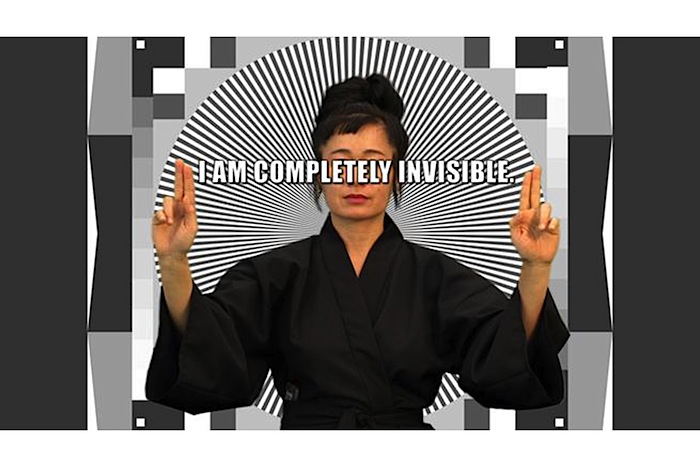
Hito Steyerl, How Not To Be Seen: A Fucking Didactic Educational .MOV File (2013)
MJ In “Politics of Art: Contemporary Art and the Transition to Post-Democracy,” you point out that the contemporary art industry “sustains itself on the time and energy of unpaid interns and self-exploiting actors on pretty much every level and in almost every function,” while maintaining that “we have to face up to the fact that there is no automatically available road to resistance and organization for artistic labor.” Bourdieu theorized qualitatively different dynamics in the composition of cultural capital vs. that of economic capital, arguing that the former is constituted by the struggle for distinction, whose value is irreducible to financial compensation. This basically translates to: everyone wants a piece of the art-historical pie, and is willing to go through economic self-humiliation in the process. If striving for distinction is antithetical to solidarity, do you see a possibility of reconciling it with collective political empowerment on behalf of those economically exploited by the contemporary art industry?
HS In Art and Money, William Goetzmann, Luc Renneboog, and Christophe Spaenjers conclude that income inequality correlates to art prices. The bigger the difference between top income and no income, the higher prices are paid for some art works. This means that the art market will benefit not only if less people have more money but also if more people have no money. This also means that increasing the amount of zero incomes is likely, especially under current circumstances, to raise the price of some art works. The poorer many people are (and the richer a few), the better the art market does; the more unpaid interns, the more expensive the art. But the art market itself may be following a similar pattern of inequality, basically creating a divide between the 0,01 percent if not less of artworks that are able to concentrate the bulk of sales and the 99,99 percent rest. There is no short term solution for this feedback loop, except of course not to accept this situation, individually or preferably collectively on all levels of the industry. This also means from the point of view of employers. There is a long term benefit to this, not only to interns and artists but to everyone. Cultural industries, which are too exclusively profit oriented lose their appeal. If you want exciting things to happen you need a bunch of young and inspiring people creating a dynamics by doing risky, messy and confusing things. If they cannot afford to do this, they will do it somewhere else eventually. There needs to be space and resources for experimentation, even failure, otherwise things go stale. If these people move on to more accommodating sectors the art sector will mentally shut down even more and become somewhat North-Korean in its outlook — just like contemporary blockbuster CGI industries. Let me explain: there is a managerial sleekness and awe inspiring military perfection to every pixel in these productions, like in North Korean pixel parades, where thousands of soldiers wave color posters to form ever new pixel patterns. The result is quite something but this something is definitely not inspiring nor exciting. If the art world keeps going down the way of raising art prices via starvation of it’s workers – and there is no reason to believe it will not continue to do this – it will become the Disney version of Kim Jong Un’s pixel parades. 12K starving interns waving pixels for giant CGI renderings of Marina Abramovic! Imagine the price it will fetch!
